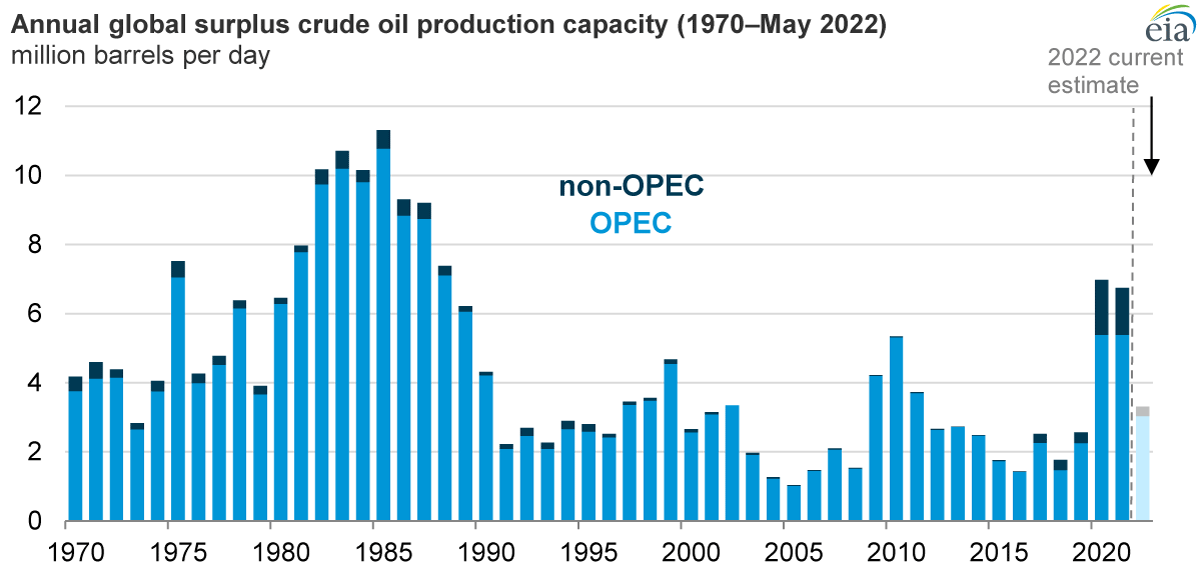Our new report, titled Global Surplus Crude Oil Production Capacity, provides estimates of global surplus crude oil production capacity in both OPEC countries and non-OPEC countries. Preliminary estimates for these data show that, as of May 2022, surplus capacity in non-OPEC countries decreased by 80% compared with 2021. The data show that, in 2021, 1.4 million barrels per day (b/d) of surplus production capacity was available in non-OPEC countries, about 60% of which was in Russia. As of May 2022, we estimate that all surplus production capacity in Russia was eliminated due to the sanctions implemented after Russia’s full-scale invasion of Ukraine. We determined that excess oil production capacity declined in other non-OPEC producing countries as well. We estimate that, as of May 2022, producers in non-OPEC countries had about 280,000 b/d of surplus production capacity.

We define surplus capacity as the maximum existing capacity that can be brought online within 30 days and sustained for at least 90 days. Our assessment of surplus crude oil production capacity does not include volumes of oil that are offline because of unplanned outages and disruptions, including sanctions, because these volumes cannot be brought to market voluntarily. For that reason, we exclude crude oil production that is offline in Iran, Libya, Venezuela, and now Russia, from surplus capacity estimates.
In our June STEO, we estimate that OPEC surplus capacity declined to 3.0 million b/d by May 2022 from 5.4 million b/d in 2021. As a result of the declines of surplus production capacity located in both OPEC and non-OPEC countries, global surplus crude oil production capacity in May 2022 was less than half of its 2021 average.
Principal contributor: Erik Kreil









